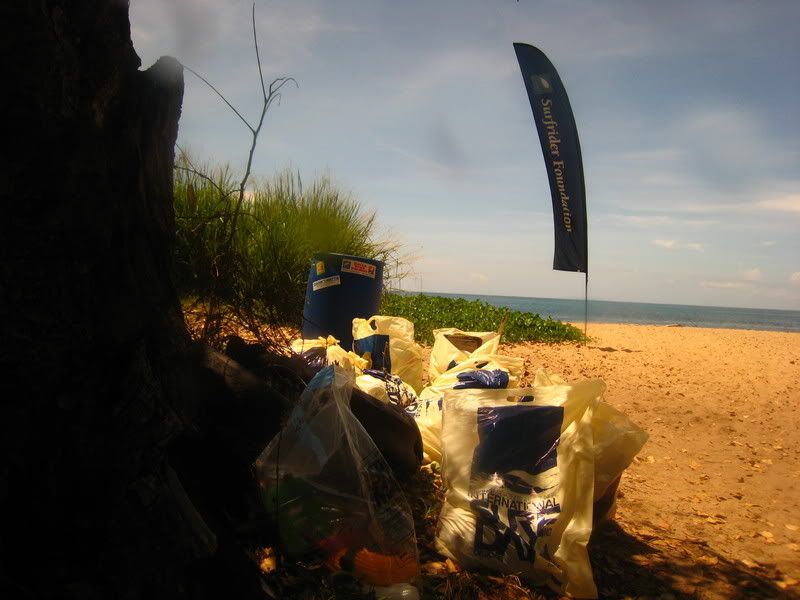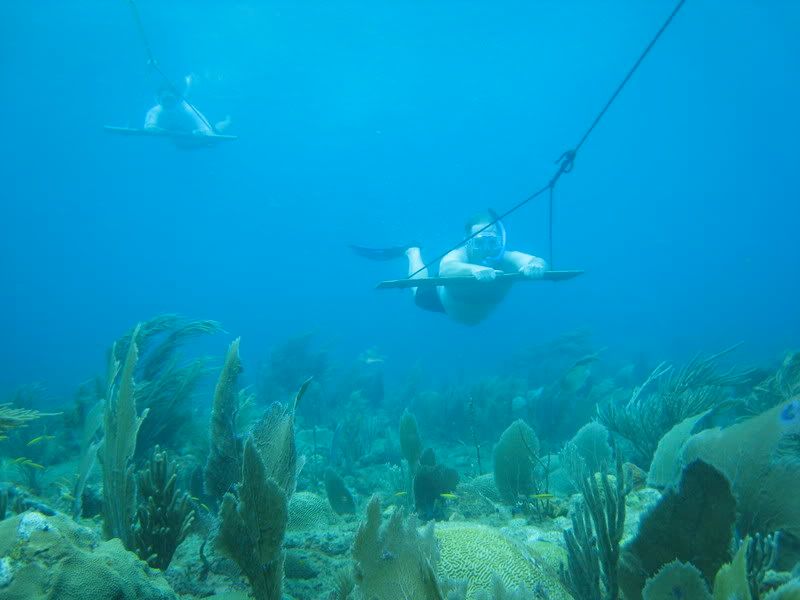20 de septiembre, 2008
Día de trabajo # 3
Hoy fue el Día Internacional de Limpieza de las zonas costeras, patrocinado por Scuba Dogs. Se realizaron limpiezas en toda la isla y dos de ellas fueron en Rincón: una en Corcega y la otra en playa Marías, la cual fue organizada por la Fundación Surfrider en Rincón. Llegamos a Marías a las 8 am, armamos un stand, pusimos música, y trajimos todo nuestro equipo para la recollección de desechos (kayaks, tablas de surf, etc.) Afortunadamante hubo una gran participación. La gente ayudó a limpiar la playa, tanto al norte como al sur de Marías. En una hora de limpieza se recogió lo siguiente: 3 bolsas de papel, 100 bolsas de plástico, 71 botellas de plástico, 74 botellas de vidrio, 50 latas, 40 botellas de cerveza, 6 zapatos, 60 cucharas de plástico / tenedores, 14 anillo de plástico para latas, 6 jarras de plástico, 50 pies de la línea de pesca, 3 botellas de aceite, 6 pies de cuerda, 4 paquetes de cigarrillos, 2 bloques de cemento, un motor de 140 libras, 3 jeringas, y, por último, 5 productos de higiene personal incluidos preservativos, tampones, toallas femeninas.
Los siguientes voluntarios ayudaron a limpiar la playa: Stacey Williams, Katie Flynn, Dennis Ritch, Carol Ritch, Tyler Ritch, Freyda Zell, Annette Blasini, Braulio Quintero, Oliver Bencosme, Roberto Ortiz, Fernando Ortiz, Steve Tamar, y Pauco Font.
Después de la limpieza de la playa los voluntarios ayudaron en la eliminación de desechos en 6 de colonias de corales de Cuerno de Alce, marcarón los puntos de referencia de 4 de neumáticos que serán removidos más adelante. Gracias!
Si alguien está interesado en ayudar en este esfuerzo comunitario para limpiar la playa, los arrecifes de Rincón y sus entornos, póngase en contacto conmigo (Wess) 401-258-4627 o siestasyolas6@aol.com.
































